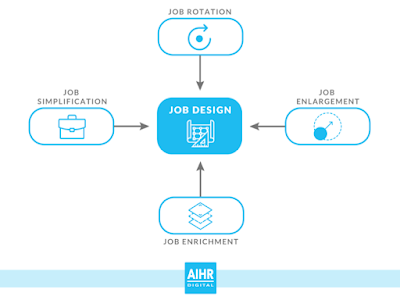In
human resource management, recruitment is a kind of procedure of seeking and
hiring a candidate who is the most suitable and qualified for a job, in a
timely and cost-effective way. Further, it can be described as
the “process of searching for planned workers and invigorating and
empowering them to apply for occupations in an organization”.
Recruitment also involves grabbing and figuring out all
practices coordinated at finding potential employees. This includes ensuring
that we understand what must be done to pull in applications from suitable
candidates (Armstrong. M, 2014).
Selection is one of the most important HR tasks since it is
vital to fill vacant positions with people who are not only suitably skilled
for specific jobs but are also flexible, willing, and able to cope with
change (Leatherbarrow. C, 2015).
Hence employee recruitment and selection is one of the most
crucial functions in HRM which is obviously challengeable. Having an effective
recruitment selection policy is a key factor for world-leading companies which
leads them to guide the staff to meet their ultimate goals. Let's find out what
are the HR strategies that they use for recruiting and selection.
How Strategic Employee Resourcing happens at World No01 apple group?
Apple Company was
established on April 1, 1976, by Steve Jobs, Steve Wozniak, and Ronald Wayne as
a business partnership. The company's first and main product is the Apple I.
Now they have launched lots of various Products that are related to technology.
such as iPhones, Apple Watch, iPads, Apple tv, Macintosh, iOS, iPods, apple TVs
and etc. Apple remains as the world's no 01 company in the last few years with
high revenue.
At apple group, they seek top talents from across industries and
different backgrounds & where they value Customer-centric, Leadership &
Innovation skills.
Interviewing at apple group
Application & interviewing process at
apple differs from one role to a role where this article will explain a common
method of strategic resourcing, how they find real talent & how they manage
it. It would be easy to divide this process into four main stages where each
& every employee at apple the group has to go through.
These are the main four stages of recruitment at apple.
1. Online Application
This part of the recruitment preparation is your first chance to
set a great impression and stand out from your competition. The online form
will inquire about your educational qualifications. Depending on the sector you
apply to, you will moreover be inquired a few motivational questions.
2. Phone Interview
After the first stage, the second will be conducted over the
phone and will be competency-based. It will consider past projects you have
worked on, in your professional career
3. Assessment
In another stage, The Apple Assessment Centre will be a chance
for you to arrange with professionals working at Apple, and learn more about
the company. It is the ideal time for you to get a better perception of what it
is like to work at Apple. it’s more like an on-the-job training session.
4. In-person Interview
At last, Apple is concerned with behavioral-based interviewing.
They anticipate their candidate's answer in an organized method which is known
as “STAR” strategy.
T – (Assignment) What goal were you working towards?
A – (Activity) Describe the activities you took to address the circumstance with details.
R - (Result) Describe the result of your activities.
Conclusion
It
is worth considering why a company like an apple utilizes these stages to
select their employees & to what extent this has been a victory to them.
Apple has made its brand and employee value proposition where people all over
the world is willing to work for it. From each of these stages, they guarantee
that they chase the most excellent ability & the finest individuals for the the job which is able to influence the organization in long-term success.
Discussion Points:
Do you agree that these
screening approaches are reasonable? Are any groups likely to be disadvantaged
by such pre-selection forms? Do you accept that a quality recruitment method
can select the proper candidate?
What needs to be
executed when the recruitment and selection method has clearly failed and if
the wrong person has been appointed?
References
Armstrong, M., (2014). Armstrong’s handbook of human resource management practice. 13th ed. [ebook] Hong Kong: Graphicraft Limited, p.Recruitment and selection 225.





























